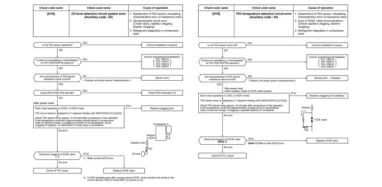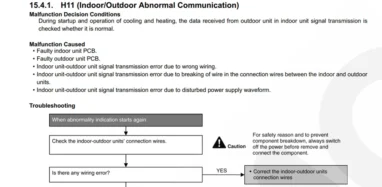With the world’s strongest economies struggling to meet their usual standards, it is indeed a trying time for the world at large. I know by now you must be thinking, “oh! common, we are not here to learn about the world economy why the unnecessary dabble?” Well, it’s not a digression because we all depend on the economy and I will explain to you how it relates to HVAC in a bit.
With the world struggling, it would be unreasonable to spend unclearly, but rather we must embrace frugality for survival. We mostly rely on our HVAC systems for comfort and they are quite expensive, therefore, it will be reasonable to get the one that is perfect for us. Knowing the CFM requirement of your HVAC can help you reduce wasteful spending. You are wondering, “what is CFM in HVAC”, right? Keep reading this article to learn more about it.
What is meant by CFM in HVAC
Ordinarily, CFM stands for Cubic Feet per Minute and it is the measurement of airflow into a room through the HVAC system per minute. To simply put it, you can say it is the unit by which the volume of air traveling through an HVAC system into a building within is determined, and it is calculated in cubic feet per minute.
The larger a building is, the higher the volume of air that will be circulating through the building because there will be enough space for the air to freely travel across the rooms.
Is CFM important in the HVAC system
Yes, CFM is important for your HVAC system. The effectiveness of an HVAC system is determined by the extent to which it can supply a building with the required level of temperature (whether it be heat or coolness). When you can estimate the volume of air that travels within a space, getting the appropriate HVAC system that will effectively serve such space will be easy.
Getting the right HVAC system that can serve a specific capacity is important because using one with an airflow higher or lower than capacity can negatively affect the performance of the system and in the long run, will lead to massive energy wastage.
How to calculate CFM in HVAC
Calculating the CFM for a particular place is easy and it can be simply done in two different ways. The first method is calculating the amount of ventilation that is needed in a specific space based on the size of the space and the number of times the air within the space needs to be exchanged.
The second is by using the power of the HVAC system to calculate its capacity (which is usually calculated in tons) and the size of the room or space to be powered by the system.
Calculating CFM based on airflow requirement of a room/space
First off, you must understand that the kind of activity that takes place within a room/space differs from one to another, and as a result, the number of times air needs to be changed will also vary.
Let’s take, for instance, the air in some areas in the house (for example kitchen and the generator room) where there is usually emission of fumes need to be exchanged more frequently from time to time like every 3 to 2 minutes for proper ventilation to take place. And for places like the bedroom or the living room where there is usually low or zero fumes, the air needs to be exchanged at least every 10 minutes.
To calculate the CFM, what is expected of you is to divide the total space volume by the rate of air exchange. The question now is, how do you calculate the volume? To calculate the volume of a room, the first step is measuring the actual length, width, and height of the entire space and multiplying them together. When you divide the result with the air exchange rate you will give you the exact airflow that is required in CFM.
Calculating based on the power (in terms of output) of the HVAC system
The capacity of an HVAC system to distribute air across a space/room is calculated in CFM/square foot. Getting the actual figure for an HVAC unit capacity is an integral step in estimating whether your HVAC system is energy efficient to supply enough heat or cooling across the building and the sizing ducts.
To calculate your HVAC capacity, first, you need to calculate the power of the unit in tons, having in mind that 1 ton is equivalent to 12000 British Terminal Units(BTUs) of cooling/heating capacity. Then you multiply it by the average power of an HVAC system, which is usually 400, and then divide the result by the building’s square footage.
How many CFM per ton HVAC
Generally, the average airflow of an HVAC unit is between 400 to 450 per ton of cooling magnitude as determined by the cooling coil. However, this is just a benchmark and can vary based on the type of HVAC system. For instance, a high-latent-heat cooling system will require 350 CFM per ton of cooling. The common HVAC design will require 400 CFM/ton. And a heat pump & sensible heat design will require 500 CFM/ton.
Is higher or lower CFM better
Ideally, an HVAC system with a high CFM should be preferred over an HVAC system or unit with lower CFM because higher CFM means enough air will be circulated. But does that make it more efficient than a unit with lower CFM? No! When it comes to efficiency, (which I think is the most important factor) what matters is the application because high CFM units are best used for large building spaces while low CFM units are best used in small areas.
HVAC CFM chart
To calculate the size of an HVAC system, technicians use HVAC CFM charts and automatic calculators to determine the volume of the airflow. This is usually calculated using 8 feet as the average ceiling height and here, the exchange rate of the air is converted to air changes per hour.
How much CFM do I need for 2000 Square feet
To calculate the cfm required for a 2000 Square feet room, you are going to first determine the height of the room and the number of times the air in the room needs to be changed. For our calculation here, we are going to make use of the standard ceiling height which is 8ft, and assume 2 to be the number of times (ACH) we are to change the air.
Therefore: V = 2000 sq ft, H = 8ft, ACH = 2
To get our CFM, we must, first of all, calculate the CFH which is cubic ft per hour.
CFH = 2000 × 8 × 2 = 32000 cubic feet per hour.
To get the cubic feet per minute (CFM) you will divide CFH by 60
CFM = 32000 = 533.33 CFM
60
Therefore, you will need 533.33 CFM for a 2000 square feet room.
How many CFM do I need for a 12 × 12 room
To calculate for a 12 × 12 room, you will have to calculate the square feet first. To get the square feet, multiply the width by the length which in this case are 12 and 12 respectively.
Therefore our square feet = 12 × 12 = 144.
For this calculation, we will be taking 3 as our ACH and our height remains 8 because it is mostly constant.
CFM = 144 × 8 × 3 = 3456 cubic feet per hour.
CFM = 3456 = 57.6 cubic feet per minute.
60
You will need 57.6 CFM for a 12 × 12 room.
How much CFM do I need for my bedroom
Firstly, you need to know the square foot of your room. How many times do you intend to change your air and the average ceiling height? Let’s assume your bedroom is 3000 Square feet and your ACH to be 2 and the ceiling height to be 8. Your calculation should look like something like this.
CFH = 3000 × 2 × 8 = 48000 cubic feet per hour.
CFM = 48000 = 800 cubic feet per minute.
60
You will need 800 CFM for your room if it is 3000 square feet.
How to increase CFM in HVAC
You can increase the CFM of your HVAC by increasing the speed of your AC unit blower. To do this, gently unfasten the setscrew used to fasten the pulley of the blower to the driveshaft. Then turn the pulley in a clockwise direction one time and tighten up the screwset.
CFM conversion
CFM con is converted to any other HVAC unit. See later sections for details about conversion.
FPM to CFM in HVAC
FPM is the speed at which air travels through an HVAC system, calculated in feet per minute. FPM is calculated using this formula 4005 x √.45 where 4005 is constant and .45 is the velocity pressure.
CFM = FPM × Duct cross-sectional area. The cross-sectional area of a square duct is calculated by multiplying the height, weight, and width. While the cross-sectional area of a round duct is calculated as π × r.
BTU/hr to CFM in HVAC
To convert BTU to CFM, divide the value given for BTU by 100000. Add the result up to 96.7 and divide your answer by 60.
HVAC Ton to CFM
1 Ton is equivalent to 400 cubic feet/minute. Therefore, to convert from Ton to CFM, all you need to do is multiply the value given for Ton by 400. For example, if the value given for Ton is 500, then you multiply 500 by 400 which will give you 200000 CFM.


